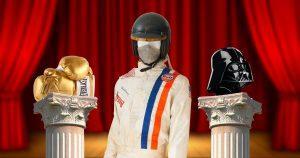Savvy Tips Guru
We’re dishing out practical strategies, tried-and-true techniques, and mind-blowing ideas to help you boss up, make smart moves, and handle any hurdles that come your way like a total pro.
So, get ready to soak up the knowledge and rock your world like a true champ.
TRENDING NEWS
As a new parent, ensuring the safety and well-being of your baby is of utmost importance. With advancements in technology, …
If you burn yourself, like when your palm touches a hot oven rack, the first thing to do is cool …
Prepare yourself for an incredible journey, as you delve into the realm of cherished pop culture artifacts and most expensive …
One of the key elements of the music industry is music distribution. It’s the process of getting your music into …
CATEGORIES
EDITORIALS PICK
Smoking doesn’t just harm your lungs—it affects your entire body, including your digestive …
Taking risks and being ready for them are key traits of any successful …
Savings accounts are a common financial tool that many individuals utilize to manage their money. …
Heating blankets have gained popularity as a cozy and comforting solution during chilly nights. They …













